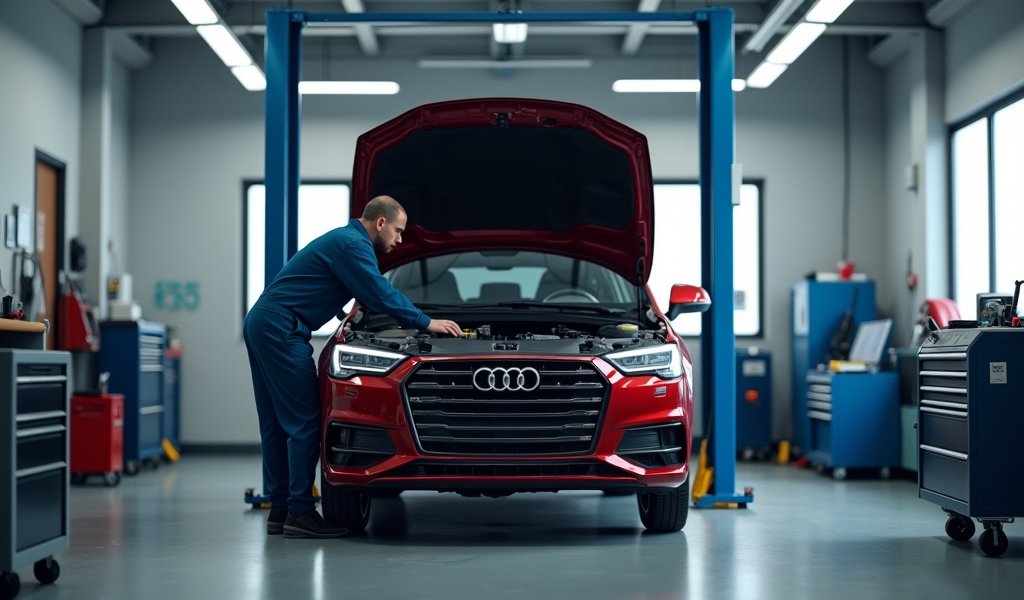Overview
This article provides guidance on purchasing used cars online through reliable platforms like Carvana, CarMax, and AutoTempest, while detailing seven essential maintenance tips that include regular oil changes, tire care, brake inspections, battery monitoring, fluid checks, air filter replacement, and professional inspections. Following these maintenance practices after purchasing from trusted websites can extend vehicle life, improve reliability, and save thousands in repair costs over time.
Table of Contents
- Finding Reliable Websites to Buy Used Cars
- Top Platforms for Purchasing Pre-owned Vehicles
- Essential Maintenance Tip #1: Regular Oil Changes
- Essential Maintenance Tip #2: Tire Care and Maintenance
- Essential Maintenance Tip #3: Brake System Inspection
- Essential Maintenance Tip #4: Battery Health Monitoring
- Essential Maintenance Tip #5: Fluid Level Checks
- Essential Maintenance Tip #6: Air Filter Replacement
- Essential Maintenance Tip #7: Regular Professional Inspections
- Conclusion
- Frequently Asked Questions
Finding Reliable Websites to Buy Used Cars
Looking for the best websites to buy used cars can feel like searching for a needle in a haystack. As a mechanic with over 15 years of experience, I’ve seen countless customers who found great deals online—and unfortunately, just as many who didn’t. The used car market in October 2023 is evolving rapidly, with both traditional dealership sites and peer-to-peer platforms offering unprecedented inventory despite ongoing supply chain challenges.
The right platform can make all the difference between driving home in a reliable pre-owned vehicle and ending up with a money pit on wheels. Today’s online marketplaces offer tools that weren’t available even five years ago: detailed vehicle history reports, virtual inspections, and even home delivery options that make purchasing easier than ever.
What separates a good used car website from a great one? Transparency is key. The best platforms provide comprehensive vehicle information, clear pricing, and accessible customer service. They also offer protections for buyers that go beyond the basic “as-is” disclaimer that’s all too common in private sales. Let’s dive into which platforms deserve your attention when shopping for your next vehicle.
Top Platforms for Purchasing Pre-owned Vehicles
When it comes to finding the best websites to buy used cars, a few platforms consistently stand out from the crowd. Carvana has revolutionized the online car buying experience with their famous “vending machine” pickup option and seven-day return policy. Their 360-degree virtual tours make remote buying less stressful, though their prices tend to run slightly higher than some competitors.
CarMax remains the largest used-car retailer in the United States, combining online convenience with physical locations where you can test drive before buying. Their no-haggle pricing policy eliminates the negotiation many buyers dread, and each vehicle undergoes a 125+ point inspection before listing.
For those comfortable with peer-to-peer transactions, AutoTempest aggregates listings from multiple sites including Craigslist, eBay Motors, Facebook Marketplace, and dealer websites. This search engine approach saves hours of browsing individual platforms, though you’ll need to exercise more caution regarding vehicle condition.
Cars.com and Autotrader remain industry stalwarts, connecting buyers with both dealerships and private sellers. Their robust search filters help you narrow options by specific features that matter to you, from heated seats to towing capacity. Both sites offer market-based pricing tools that help you determine if you’re getting a fair deal.
TrueCar focuses on price transparency by showing what others paid for similar vehicles in your area. Their Certified Dealer Network provides upfront pricing information and a smoother buying process, though inventory can be more limited than other platforms.
For luxury or enthusiast vehicles, Bring a Trailer has transformed from a curiosity to a major marketplace. Their auction format and knowledgeable community provide detailed information about each vehicle’s condition and history, though bidding can drive prices up quickly for desirable models.

Essential Maintenance Tip #1: Regular Oil Changes
If there’s one maintenance ritual that separates long-lasting vehicles from the breakdown-prone, it’s consistent oil changes. Think of engine oil as your car’s lifeblood—it lubricates moving parts, reduces friction, disperses heat, and carries away contaminants. When you purchase from even the best websites to buy used cars, establishing a fresh oil change schedule should be your first priority.
For conventional oil, the traditional advice was every 3,000 miles, but most modern vehicles can go 5,000-7,500 miles between changes. If your used vehicle takes synthetic oil, you might stretch that to 10,000-15,000 miles, but I recommend checking your specific owner’s manual rather than relying on general guidelines. Previous owners may have cut corners here, so don’t assume the existing maintenance schedule was optimal.
What many buyers don’t realize is that regular oil changes do more than protect your engine—they provide an opportunity for early problem detection. A trained technician can spot developing issues during routine service that might otherwise go unnoticed until they cause significant damage. Oil analysis can even reveal internal engine problems before they become catastrophic.
After purchasing a used vehicle, I always recommend starting with a fresh oil change regardless of what the seller claims about recent maintenance. This gives you a clean baseline and peace of mind that you’re starting your ownership with proper lubrication. Consider it an inexpensive insurance policy against premature engine wear that could cost thousands to repair.
Essential Maintenance Tip #2: Tire Care and Maintenance
Your tires represent the only contact points between your vehicle and the road, making them critically important for both safety and performance. Even vehicles from the best websites to buy used cars may come with tires that look decent but have hidden issues. Start by checking the manufacturing date—tires older than six years should be replaced regardless of tread depth due to rubber degradation.
Proper tire pressure isn’t just about safety; it directly affects fuel economy and handling. Check pressure monthly (including the spare) when tires are cold, and follow the specifications listed on the driver’s door jamb sticker—not the maximum PSI printed on the tire itself. Even a 10% reduction in tire pressure can reduce fuel efficiency by 1-2% while accelerating wear patterns.
Regular rotation helps tires wear evenly and extends their life significantly. The general recommendation is every 5,000-8,000 miles, though front-wheel drive vehicles may need more frequent rotation due to uneven weight distribution. While having tires rotated, ask for a balance check as well—even slight imbalances can cause vibrations that compromise comfort and accelerate wear on suspension components.
Alignment is often overlooked but crucial for tire longevity. If your used vehicle pulls to one side or the steering wheel isn’t centered when driving straight, an alignment check should be your next stop. Even minor misalignment can cause premature tire wear and reduce fuel efficiency by creating unnecessary drag. A proper wheel alignment isn’t just about straight tracking—it optimizes the suspension geometry for the best combination of handling, comfort, and tire life.
Essential Maintenance Tip #3: Brake System Inspection
Your brake system isn’t something to take chances with, especially in a recently purchased used vehicle. Even cars from the best websites to buy used cars should undergo a thorough brake inspection immediately after purchase. Look beyond just pad thickness—the entire system needs evaluation, including rotors, calipers, brake lines, and fluid condition.
Brake fluid is hygroscopic, meaning it absorbs moisture from the air over time. This moisture contamination lowers the fluid’s boiling point and can cause brake fade during hard stops. Most manufacturers recommend changing brake fluid every 2-3 years regardless of mileage, yet this service is frequently overlooked by previous owners. Fresh fluid provides consistent pedal feel and reliable stopping power in emergency situations.
When inspecting a used car’s brakes, pay attention to how the pedal feels. A spongy or soft pedal could indicate air in the lines, while a pedal that gradually sinks to the floor might suggest a master cylinder problem. Any pulsation during braking often points to warped rotors, which should be either machined (if thickness permits) or replaced.
Don’t ignore unusual noises during braking. While some pad compounds naturally produce minor noise, persistent squealing typically indicates wear indicators making contact with rotors. Grinding noises are particularly concerning—they usually mean the pads have worn completely, allowing metal-to-metal contact that damages expensive rotors. According to the National Highway Traffic Safety Administration, properly maintained brakes are crucial for preventing accidents and should never be neglected.
Essential Maintenance Tip #4: Battery Health Monitoring
Battery failures consistently rank among the top reasons for roadside assistance calls, yet they’re largely preventable with basic monitoring. When you purchase from the best websites to buy used cars, don’t take the seller’s word that the battery is “almost new”—have it tested professionally. Most auto parts stores offer free battery testing that measures both voltage and cold cranking amps (CCA), the true indicators of battery health.
Modern batteries typically last 3-5 years, but this varies dramatically based on climate, driving habits, and electrical demands. Vehicles in extreme hot or cold environments often experience shortened battery life, as do those used primarily for short trips that don’t allow full recharging. A good battery might read 12.6 volts when fully charged and resting, but the real test comes under load conditions.
Pay attention to early warning signs of battery decline. Slow engine cranking, dimming headlights during starting, or electronic systems behaving erratically can all indicate a failing battery. Don’t wait for complete failure—replacing a battery proactively prevents the cascading electrical problems that often accompany emergency jumps and sudden power loss.
Keep battery terminals clean and tight to prevent voltage drop and ensure efficient starting. Corrosion at the terminals creates resistance that makes your starter work harder and can damage sensitive electronic components. A simple mixture of baking soda and water works wonders for cleaning battery terminals, followed by protective terminal spray to prevent future corrosion.
Essential Maintenance Tip #5: Fluid Level Checks
Your vehicle relies on several crucial fluids beyond just engine oil, and monitoring them regularly can prevent expensive repairs. Transmission fluid, power steering fluid, brake fluid, coolant, and windshield washer fluid all play vital roles in keeping your car running smoothly. Particularly when purchasing from the best websites to buy used cars, establishing baseline fluid conditions should be a priority.
Transmission fluid deserves special attention in used vehicles. In automatic transmissions, this fluid serves as both a lubricant and hydraulic fluid for shifting. Unlike engine oil, transmission fluid often doesn’t have a dipstick in newer models and requires special procedures to check properly. The color should be clear red or pink—brown or black fluid with a burnt smell indicates internal damage and requires immediate attention.
Coolant condition is another critical indicator of previous maintenance quality. Fresh coolant should appear bright green, orange, or pink (depending on type) and be free of particles or oil contamination. Rusty or cloudy coolant suggests corrosion inside the cooling system, which can lead to overheating and expensive engine damage. Most manufacturers recommend coolant replacement every 30,000-60,000 miles, though extended-life formulations may last longer.
When checking power steering fluid, look for appropriate level and clarity. Foamy or discolored fluid often indicates air in the system or internal wear. Similarly, brake fluid should be clear or light amber—dark fluid suggests contamination and reduced effectiveness. Taking five minutes each month to check these vital fluids can save thousands in repair costs and maximize your vehicle’s resale value down the road.

Essential Maintenance Tip #6: Air Filter Replacement
Your engine breathes through its air filter, making this simple component surprisingly important for performance and efficiency. A clean air filter improves fuel economy, reduces emissions, and helps your engine develop full power. Many vehicles purchased from the best websites to buy used cars arrive with dirty filters that restrict airflow and compromise performance.
Checking your air filter is one of the easiest maintenance tasks you can perform yourself. Most filters are housed in a plastic box secured by clips or simple screws. Hold the filter up to a light source—if light doesn’t pass through easily, it’s time for replacement. In dusty environments, you might need replacement as frequently as every 15,000 miles, while those in cleaner areas might stretch to 30,000 miles.
Don’t forget about your cabin air filter, which keeps the air inside your vehicle clean. Located typically behind the glove compartment or under the dashboard, this filter traps pollen, dust, and other airborne contaminants. A clogged cabin filter not only affects air quality but can strain your climate control system and create unpleasant odors. The EPA estimates that indoor air quality can be significantly worse than outdoor air, making this filter particularly important for those with allergies or respiratory concerns.
When replacing air filters, resist the temptation of reusable “performance” filters unless you’re committed to regular cleaning and re-oiling. Most vehicles perform perfectly well with standard paper filters that provide excellent filtration at reasonable cost. The minor airflow improvement from specialty filters rarely translates to noticeable performance gains in everyday driving conditions.
Essential Maintenance Tip #7: Regular Professional Inspections
While DIY maintenance is valuable, nothing replaces the trained eye of an experienced technician for comprehensive inspections. Even when purchasing from the best websites to buy used cars, establishing a relationship with a trusted mechanic provides peace of mind and potentially saves thousands in preventative maintenance.
I recommend scheduling a thorough inspection within the first month of ownership, regardless of the vehicle’s apparent condition. A professional can spot developing issues invisible to the untrained eye—minor oil leaks, suspension wear, steering components approaching failure, or electrical problems that haven’t yet triggered warning lights.
During these inspections, ask the technician to check often-overlooked items like motor mounts, CV boots, suspension bushings, and exhaust system integrity. These components typically deteriorate gradually, making changes difficult to notice during daily driving. Small issues caught early typically cost a fraction of what they’d require if allowed to progress to complete failure.
Beyond the initial inspection, establish a regular maintenance schedule that includes professional evaluations at key intervals. Most manufacturers recommend major inspections at 30,000-mile increments, but I suggest more frequent checks for higher-mileage used vehicles. The modest cost of these inspections is insurance against major breakdowns and helps maintain both reliability and value. According to Consumer Reports, regular professional maintenance is the single most effective way to extend vehicle life beyond the 200,000-mile mark.
Conclusion
Finding the best websites to buy used cars is just the beginning of your journey with a pre-owned vehicle. The true value emerges from how well you maintain your investment after purchase. These seven essential maintenance tips form the foundation of responsible ownership that can extend your vehicle’s life by years and save thousands in unexpected repairs.
Remember that consistency matters more than perfection when it comes to car maintenance. Establishing regular habits—checking fluids monthly, tracking oil change intervals, rotating tires on schedule—creates a protective routine that catches small issues before they become major problems. Even the most meticulously maintained used car will eventually need repairs, but preventative care dramatically reduces their frequency and severity.
The digital landscape has transformed how we buy used cars, offering unprecedented access to inventory across the country. Whether you choose established platforms like CarMax and Carvana or aggregators like AutoTempest, today’s online marketplaces provide tools and information that make informed decisions possible. Combine this shopping power with disciplined maintenance, and you’ll enjoy the substantial financial benefits of used car ownership without the headaches that come from neglect.
Your vehicle represents one of your largest investments—treat it accordingly. The modest time and money invested in regular maintenance pays dividends through improved reliability, safety, fuel efficiency, and ultimately, resale value when it’s time to find your next car through the best websites to buy used cars.
Frequently Asked Questions
What’s the safest payment method when buying from online car marketplaces?
Secure payment platforms like escrow services or dealership financing offer the most protection. Avoid wire transfers or cash payments to sellers you haven’t verified through official channels.
How can I verify a vehicle’s history before purchasing online?
Always obtain a comprehensive vehicle history report through services like Carfax or AutoCheck using the VIN. These reports reveal accidents, title problems, service records, and ownership history.
Is it better to buy from peer-to-peer platforms or dealership websites?
Dealership websites typically offer more buyer protections and certified pre-owned options, but often at higher prices. Peer-to-peer platforms may offer better deals but require more due diligence and inspection arrangements.
What should I do if a used car I purchased online arrives with undisclosed problems?
Check the platform’s return policy immediately—many major sites offer 5-7 day return windows. Document all issues thoroughly with photos and obtain an independent inspection report to support your claim.
How much should I budget for maintenance on a used car purchased online?
Plan for 1-2% of the vehicle’s value annually for routine maintenance, plus an emergency fund of $1,000-$1,500 for unexpected repairs. Higher-mileage luxury vehicles may require significantly more.


Pingback: Fastest Way to Sell a Car: 7 Quick Fixes - knowsyourcar.com